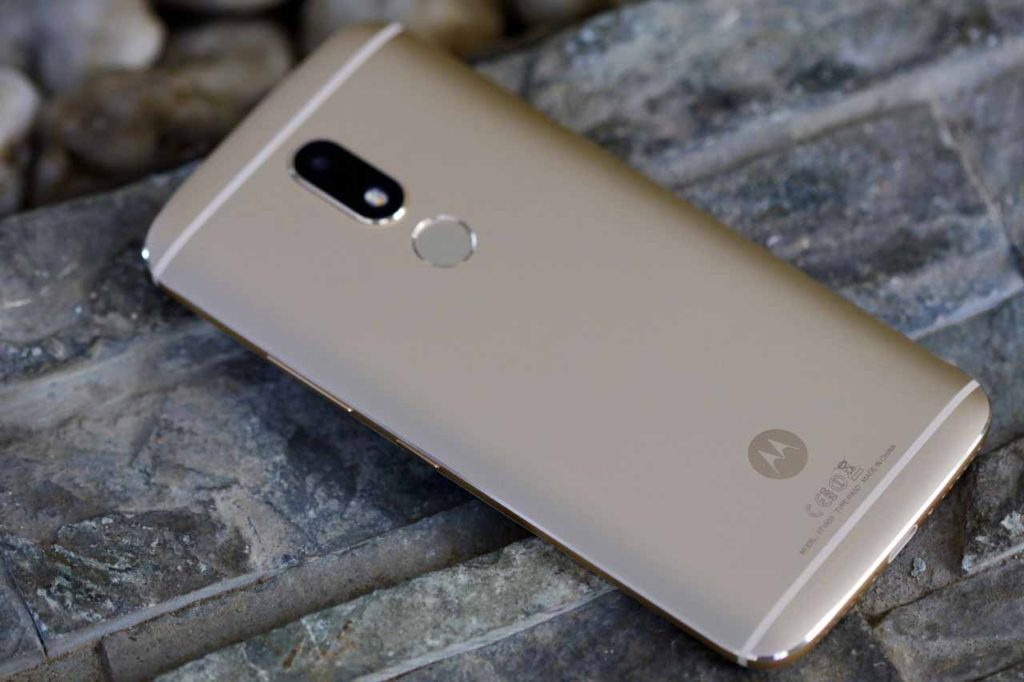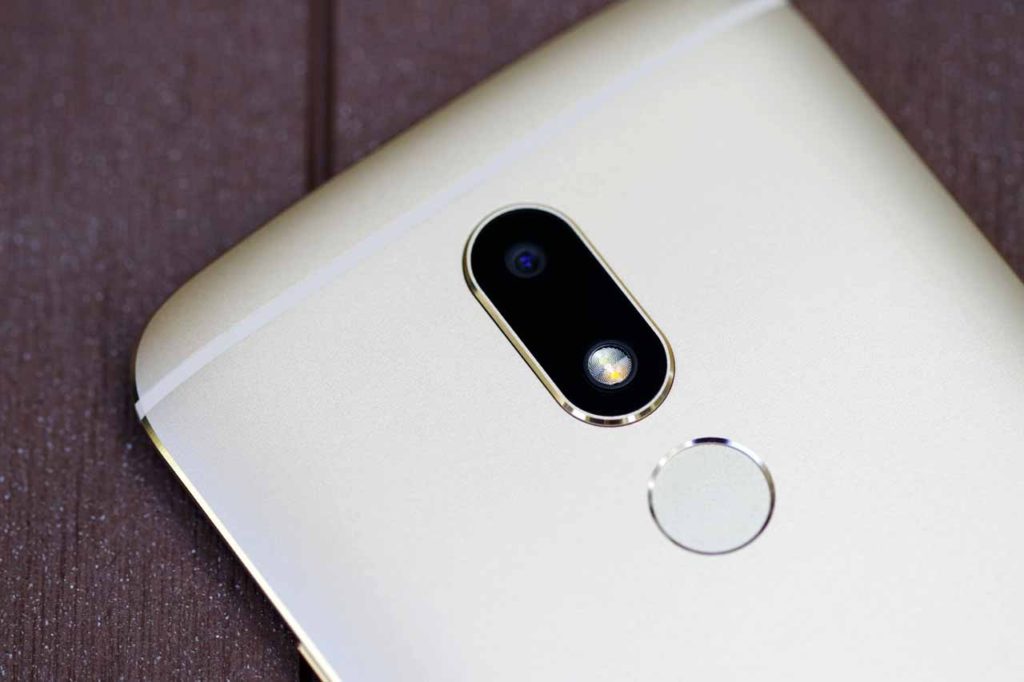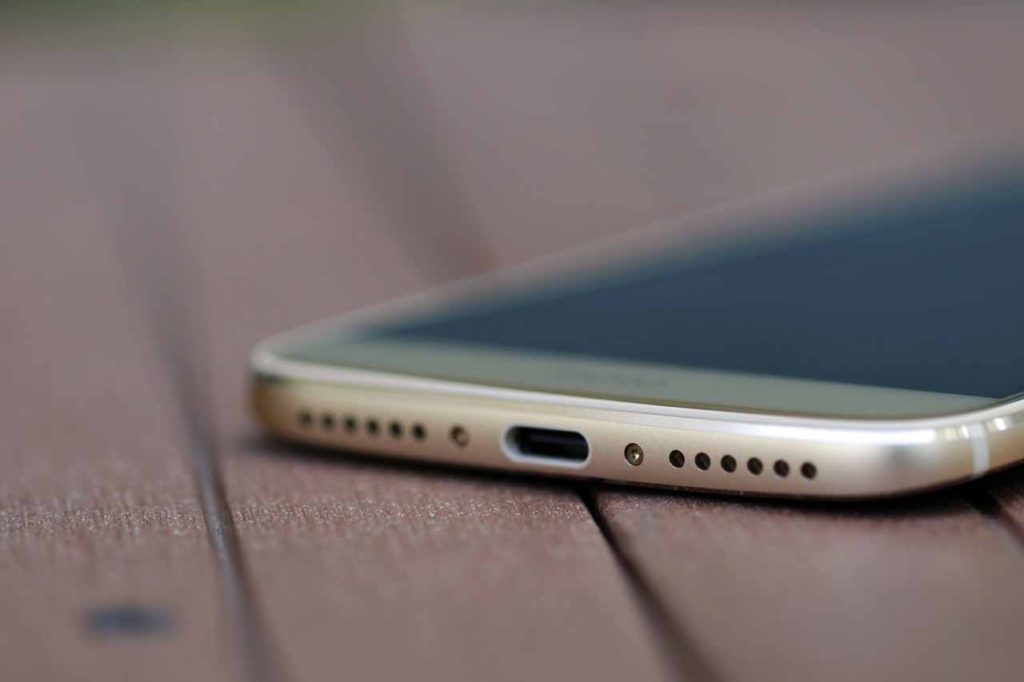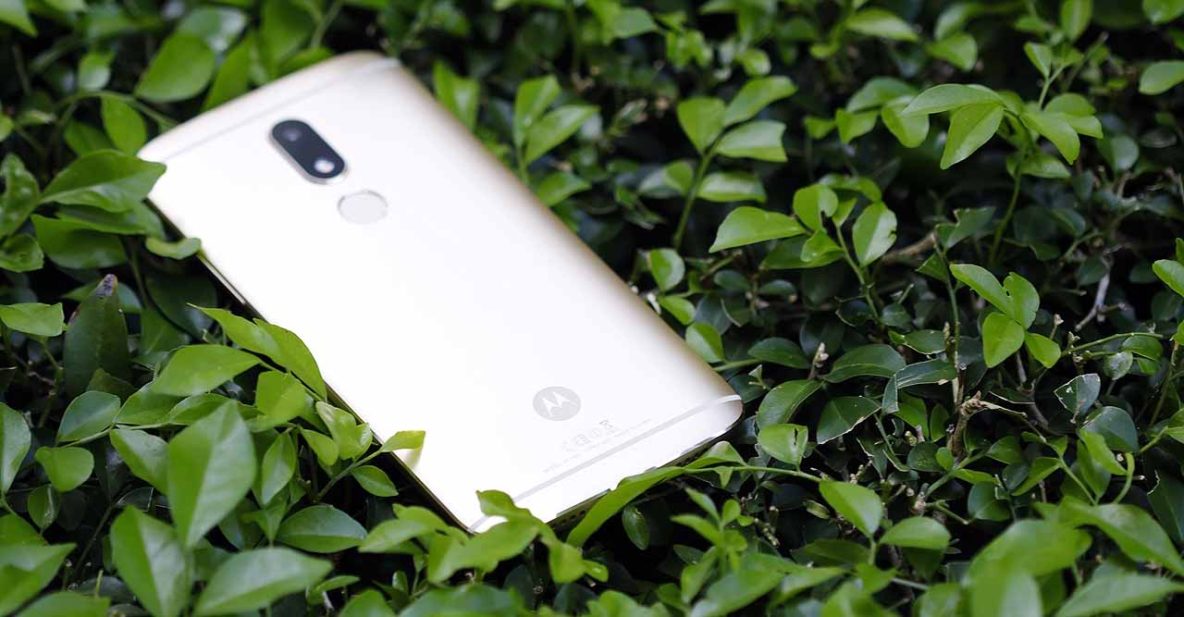The M is priced at P14,999 and will go on sale starting February 24th. It’s only available in gold at the moment, though that’s not necessarily a knock on the smartphone — unless, of course, your current daily driver also has a gold finish. To which we say: You’re probably going to want to pair your purchase with a non-clear case, but good luck finding one offline. (Thankfully, the retail box includes a form-fitting hard case.)
‘M’ for metal
That “M,” as Moto will tell you, stands for metal, which sounds fitting given the phone’s premium, all-metal design that looks as good as it feels in your hand. Let us repeat for emphasis: You’re looking at a Moto phone clad in metal.

This is the first Moto phone that is clad in metal.
And if you’re wondering why that’s worth pointing out, you clearly haven’t been paying enough attention to Moto’s previous efforts. The folks at Lenovo finally got the memo: Plastic, or polycarbonate, as some manufacturers call it, is so out of fashion in the midrange; metal is in — and here to stay.
In all fairness, Lenovo did a great job with the Moto M’s metal casing. It looks awesome, and touts a special coating for protection against splashes and spills, while the rounded left and right edges with chamfered portions lend the hardware a greater degree of comfort and grip, which are important for a phone this size. And at 7.9mm thick, its form factor is thinner than many supposedly anorexic phones out there.
SEE ALSO: The resurrection of Moto: Why it might be successful in PH this time
The two antenna bands that streak across the top and bottom sections of the back are fairly visible but are subtly colored to match the rest of the paint job. There’s also a fingerprint sensor, and similar to how many other sensors in the price class work, it’s fast and accurate — and that’s all you need to hear about it.

The fingerprint sensor on the back of the Moto M is fast and accurate.
Sliding to the right-hand side, the power button is textured to make it easier to tell the difference between it and the volume rocker. We found the location of both buttons just right for our hands.

The Moto M’s power button is textured.
A Type-C port that has been gradually making its way into mobile devices and laptops adds convenience, and is sandwiched by speaker holes along the left and right sides of the bottom plate. There’s only one loudspeaker, though; it’s along the right side of the handset. We prefer stereo speakers mounted on the front, but it does pump out a decent amount of volume.

We prefer stereo speakers mounted on the front, but the loudspeaker on the right side of the Moto M’s bottom plate does pump out a decent amount of volume.
Another nice Moto M feature that could get glossed over in the conversation is the screen. Its 5.5-inch, 1080p LCD panel should be big enough and sharp enough to please most users. Never mind that you can’t ask for more from a midranger. The colors are vibrant; the blacks appear satisfyingly deep for a display of this type; and the viewing angles are wide, with no color degradation. So, yes, it’s ideal for catching up on the shows and movies you’ve missed when there’s not a bigger screen around.

The colors on the Moto M’s screen are vibrant; the blacks appear satisfyingly deep for a display of this type; and the viewing angles are wide, with no color degradation.
Sample shots
Here are some sample photos taken with the Moto M’s 16-megapixel rear camera with an f/2.0 aperture lens and phase-detection auto-focus. It’s paired with a dual-tone LED flash unit to help the camera see in the dark. The one responsible for shooting selfies is an 8-megapixel unit with the same aperture size as the rear-facer, but has larger pixels for superior low-light performance.
Resized sample photos taken with the Moto M. Here are the original images.
The high megapixel count on the primary and secondary cameras sounds promising enough, but we’re not particularly enthused by the results. Images tend to look too warm; details can be fuzzy; and dynamic range is pretty weak.
Mr. Muscle
Depending on the market, the Moto M packs either a MediaTek Helio P10 or P15 system-on-a-chip. The latter (thankfully) powers our unit, and it comes with 4GB of RAM and 32GB of storage that can be expanded using a microSD card, albeit at the cost of a secondary SIM.
The P15 is a relatively new chip, but don’t stress out over the particulars. If you’re already familiar with how the P10 performs, you’ll likely have a keen sense of what to expect from the P15. It is, after all, just a slightly higher-clocked P10, both in CPU and GPU terms. MediaTek claims the P15 is 10 percent faster, although we honestly can’t say if it’s worth the trouble.

The Moto M’s benchmark results on Geekbench and Antutu
What we’re sure of is this: The Moto M is fast, but it’s not bonkers-fast, or even gaming-fast. It won’t run demanding games at the highest settings. And worse still, at least in our case, our unit couldn’t run NBA 2K17 in spite our many attempts; it freezes before tip-off.
We’re thinking a software update may improve the situation, and it could arrive sooner rather than later. Why do we say this? Because we’ve upgraded our unit twice — for non-security-related reasons — since receiving it.
The 3,050mAh battery typically gets us through a work day, which, again, isn’t great but isn’t horrible, either. The good news is that it takes around 100 minutes to bring the battery back to full using the supplied 10-watt charger.
Is Moto M better than the P13,999 Moto G4 Plus?
On a strictly hardware level, yes — no doubt about it. The M proves that Moto can make a metal phone at a favorable price. Plus, again, it’s gorgeous, something we hardly ever say about a Moto device. From a performance perspective, from a gaming perspective, however, the Moto G4 Plus delivers a nippier experience, in large part because of a better graphics processor.
Our advice: Pick one that suits your priorities best. Do your due diligence, and see what other brands are offering. It’s a great time to scoop up a powerhouse Android phone for under P15,000.

Lenovo’s Moto M, despite the shortcomings, is decent value in a more-than-decent package.
Final thoughts
Lenovo’s Moto M, despite the shortcomings, is decent value in a more-than-decent package. While it performs admirably and is slick under the finger, barring a couple of software niggles, which may be ironed out in future patches, there’s little else that sets it apart from segment standouts built around the latest Qualcomm Snapdragon processors and those carrying cameras that deliver in an arguably all-important area: low light.
Unfortunately for the Moto M, it sits where the competition is abundant and fiercest. But if looks alone do it for you, this is easily one of the better choices out there.










